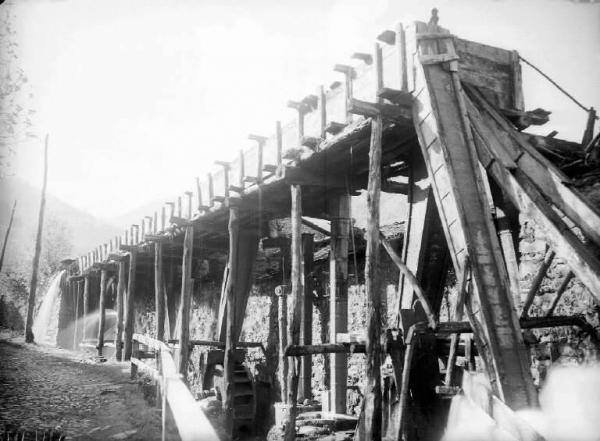The ecomuseum territory of Vè Rè and the Magli valley is located in Val Grigna, the lateral valley of the Media Valle Camonica, within the Park of Adamello, an area of high environmental value. It is enclosed between the historic nucleuses of Bienno and Prestine, which have retained the original architectural features of the ancient villages. These sites keep intact the traces of their long history and the ancient economy: examples include forges and historic buildings, the fifteenth mill, the Venetian saw, the hermitage, the churches and their frescoed historical cycles. The ecomuseum is characterized by various demo-ethno-anthropological themes. Iron craftsmanship, well-documented by the local museum system, is valorised and preserved in the most significant areas of iron processing: the Ethnographic Museum, with the ancient water mists, the demonstrations of the traditional methods of iron processing, the forge ludoteca for didactic activities, the forge lab for forging courses and the showroom for exhibitions and art gatherings. Equally important is the theme of mountain farming and the transformation of agricultural products, as witnessed by the fifteenth Mill Mill Museum which is still active for the milling of cereals, which retains the ancient mill of the mill that has become a museum of rural life. Another important element to be valued is the Prestine Venetian sawmill, which is also originally moved from the waters of the Vera Ré. The ecomuseum has already accomplished a challenging job of identifying and enhancing certain aspects of local immaterial culture, exploring in particular the themes related to the knowledge and skills of craftsmanship of wrought iron and the traditional techniques of processing cereal flour. Compared to these themes, the tools, objects, tools, artefacts and cultural spaces associated with them have been collected, which communities, groups and individuals recognize as being part of their cultural heritage. This intangible cultural heritage, transmitted from generation to generation, is constantly recreated by communities and local associations in accordance with their living environment, their interaction with nature and their history, and provides the local population with a sense of identity and continuity. However, there is still a need to keep in mind the preservation of oral traditions and expressions, including language, understood as a vehicle of intangible cultural heritage, performing arts and folk songs, social practices, rituals and parties.
Vaso Re Ecomuseum
